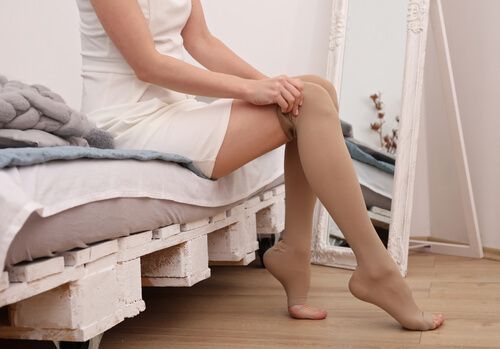Varicose veins calf
Varicose veins are blood vessels in the upper or lower legs that have become enlarged. Varicose veins occur because the valves in the veins do not close properly, causing blood to flow backward. Varicose veins can lead to sore legs or calves. In many cases, the symptoms are most noticeable in the calf. If you have a standing profession, varicose veins can be particularly bothersome.
Our veins transport blood back to the heart. From the legs – especially the lower legs and calves – the blood must be pumped upward toward the heart. This requires extra effort. To prevent the blood from flowing back down, the veins contain valves that ensure the blood flows in the right direction. When these valves no longer function properly, blood flows back downward. The pressure that builds up causes the vein to stretch. This leads to varicose veins, which are often visible or painful in the calf area.
Women are more likely to suffer from varicose veins than men.
Causes of varicose veins
- Hereditary predisposition
- Hormonal factors
- Pregnancy
- Standing or sitting for long periods
- Overweight
- Aging

Symptoms of varicose veins
- Heavy, tired and often warm legs (especially in the calves)
- Itching
- A feeling of tension
- Cramps
- A pulling or stabbing pain in the calves
- Vibrations in the legs, mainly in the calves
Treatment of varicose veins
The treatment of varicose veins may involve removing the non-functioning vein. Prevention of varicose veins can be achieved by wearing support stockings (compression therapy), especially when symptoms are present in the calves.

- Physiotherapist
- Sports podiatrist
- Manual therapist
- Podopostural therapist
- Myofascial dry needling specialist


